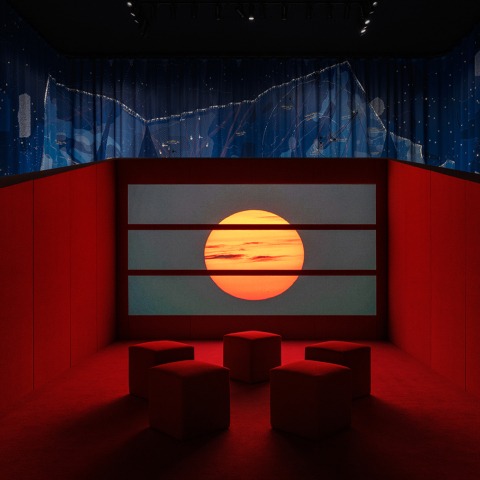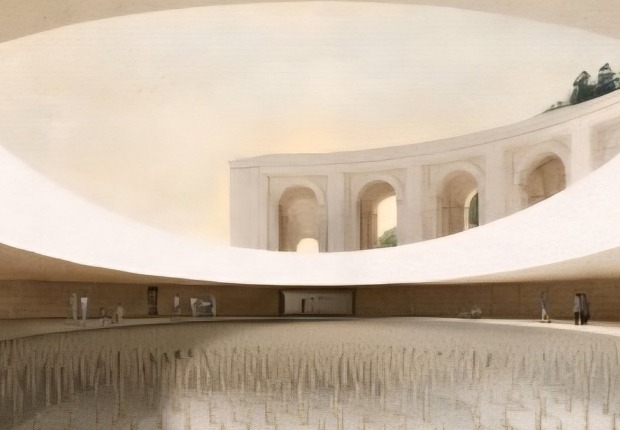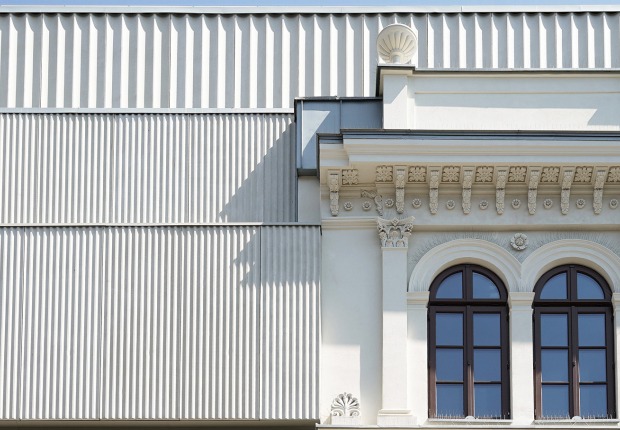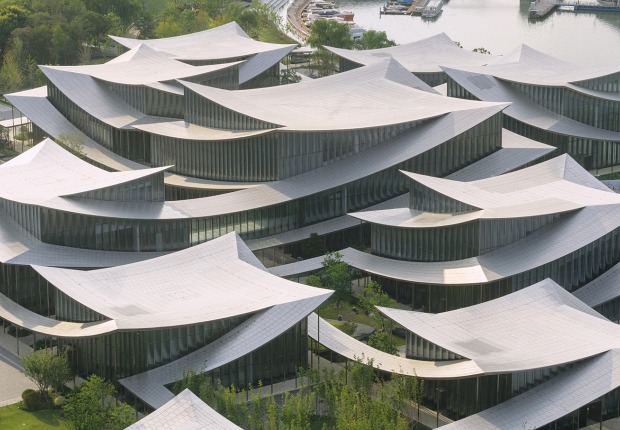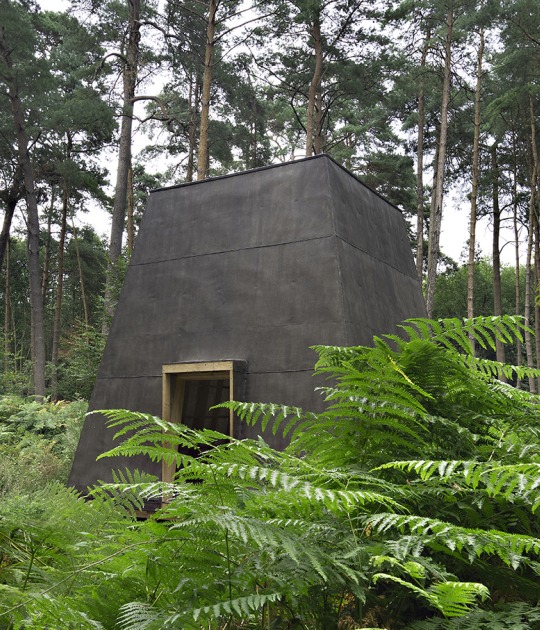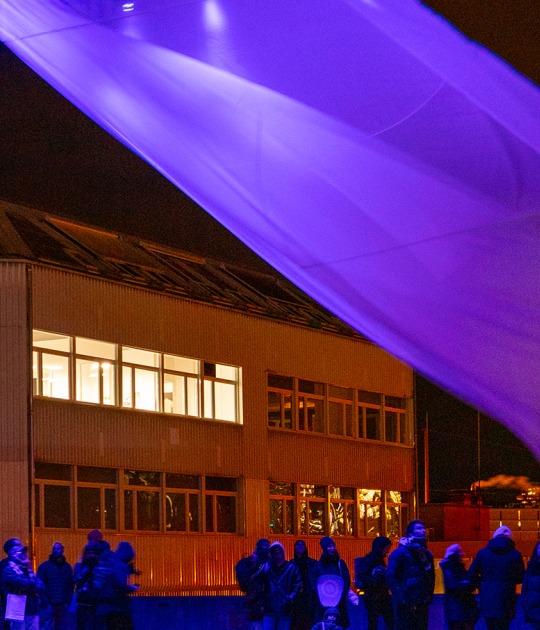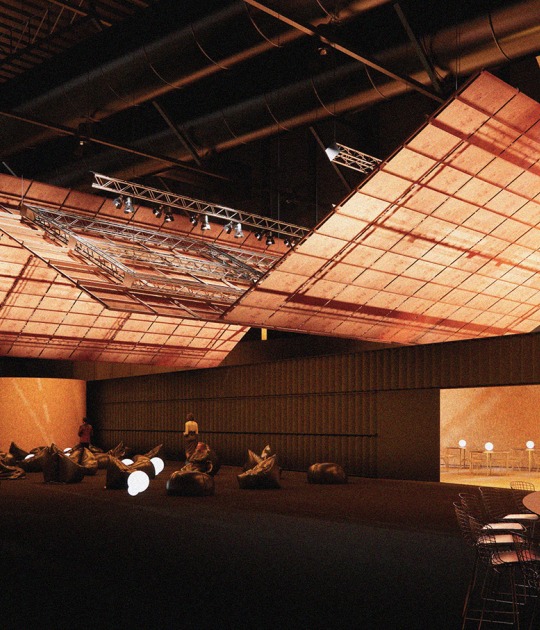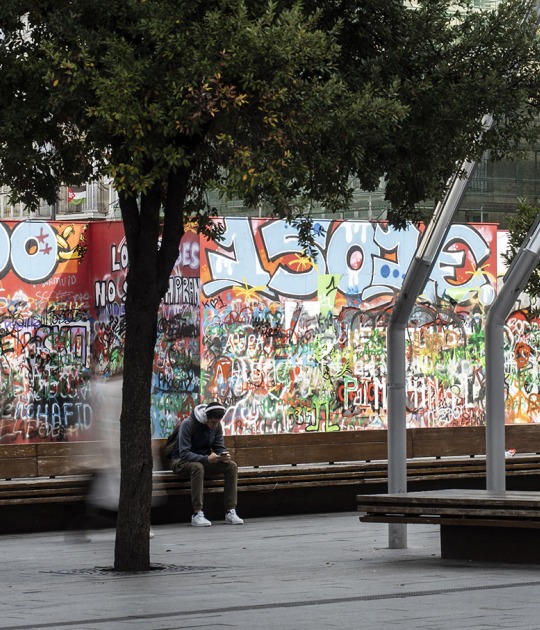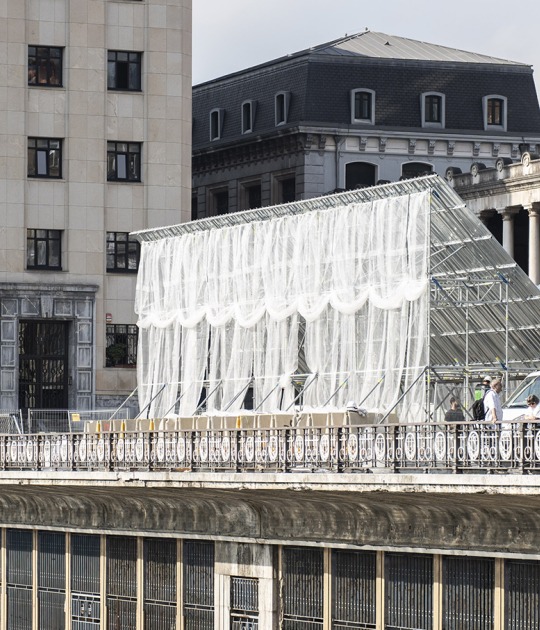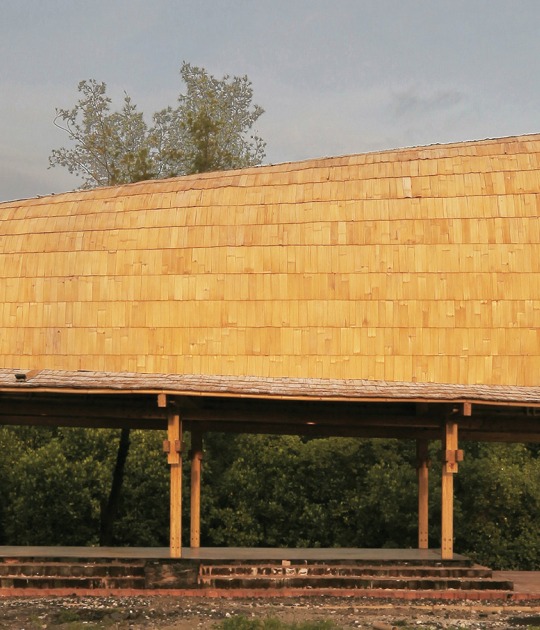
The exhibition at the Qatar Pavilion, designed by the Office for Metropolitan Architecture's think tank, OMA/AMO, welcomes visitors through a color gradient that simulates the arrival on land, from shallow waters to sandy shores. Inside, a combination of poems and carefully selected photographs express the richness of Qatar's ecosystems and the beauty of its natural environment.
At the heart of the exhibition, a deep blue curtain surrounds a cinema room, inspired by traditional Qatari winter camps. The film, split across three screens, combines images of Qatari people with natural landscapes and flora and fauna characteristic of the country. The images depicted on the striking blue canvas, which simulates the stratification of the sea, reflect the complex relationship between human and marine life.

"From the coastline, we progress". Photograph by Marco Cappelletti, courtesy of OMA / AMO.
Project description by OMA/AMO
The Qatar Pavilion has opened at World Expo 2025 Osaka-Kansai with an exhibition curated and designed by AMO. The pavilion was commissioned by Qatar's Ministry of Commerce and Industry with creative and content direction led by the Qatar Blueprint, a think tank within Chairperson’s Office of Qatar Museums. Titled From the Coastline, We Progress, the exhibition explores the country's identity as it is shaped by its shores, offering an experiential narrative in which environment, culture, and economic transformation converge. Qatar's strategically planned growth has transformed it into the economic and diplomatic powerhouse it is today.
Spanning twelve key coastal locations, the exhibition presents a comprehensive exploration of Qatar's enduring relationship with its coastline. A compact peninsula with a sparse interior, Qatar has developed its industries and cultures along its shores for centuries, reflecting both this rich history and its evolution into a vision for the future.

Approaching the pavilion's entrance, visitors experience a color gradient that references coming ashore, from shallow turquoise waters to sandy shores. The outdoor vitrines feature aerial photography documenting the ecosystems along Qatar's coastline, particularly Al Zubarah in the northwest. Poems by Ahmed bin Hassan Al-Hassan Al-Muhannadi and Sheikh Jassim bin Mohammed bin Thani express the richness and beauty of Qatar's natural environment. Inside, clear tubes filled with sands of various hues represent the desert landscapes and guide visitors towards the main exhibition space.
A deep blue curtain, developed in collaboration with landscape and interior architecture firm Inside Outside, surrounds the main exhibition space and represents the intricate layering of the sea. The visuals highlight the careful navigation needed to address the complex interactions between human and marine life, overlaying ecological systems, industrial infrastructure, and archeological sites. An introductory panel illustrates Qatar's historical trajectory and modern development. Two maps are displayed: one showing nineteenth-century Qatar with villages along the coastline, and the other a complex contemporary maritime chart that highlights human and non-human environments.

The exhibition features twelve niches carved from an aluminum-clad wedge shape, each showcasing a curved, backlit panorama of significant zones. These displays are detailed with intricate maps with colored beads that symbolize Qatar's activities in culture, industry, ecology, hospitality, and heritage. The locations include Khor Al-Udaid, a proposed UNESCO World Heritage site; Mesaieed and Al Wakrah, an industrial zone and historic port; Old Doha Port and the Corniche, one of the key areas of development after Qatar's independence; and Ras Laffan and Fuwairit, home to one of the largest liquefied natural gas ports in the world.
Central to the exhibition is a cinema space inspired by Qatar's traditional winter camps, featuring a film directed by AMO that chronicles the nation's modern history through new footage and valuable archives—from 1950s British Petroleum documentaries to Ron Fricke's views of daily life of the peninsula. The three-screen film juxtaposes natural landscapes, animal life, and urban identity with images of the people of Qatar.
Before visitors arrive at the gift shop, they encounter a small display of traditional objects, loaned from and curated by the National Museum of Qatar, which were traditionally used by men on pearl-diving expeditions and by women back on land.

The exhibition will run through 13 October, when Expo 2025 closes. It is the latest chapter in OMA's expanding portfolio in the Gulf region, following projects such as the Qatar National Library and the headquarters of the Qatar Foundation, both completed in 2017. AMO has worked extensively on research and exhibitions focusing on Qatar, such as Making Doha, the opening exhibition at the Qatar National Museum in 2019. In addition, AMO has published extensively on the rapid urbanization of the region in two special issues of Volume magazine, Al Manakh (2007), and Al Manakh: Gulf Continued (2010). In October this year, AMO's exhibition Countryside, A Place to Live, Not to Leave, will open in Doha.
The exhibition at Qatar Pavilion was curated and designed by Samir Bantal, Shinji Takagi, and Yotam Ben Hur. The Qatar Pavilion was designed by Kengo Kuma & Associates. The exhibition is one of two projects by OMA/AMO commissioned for Expo 2025, the other being an installation for Louis Vuitton at the French Pavilion.
